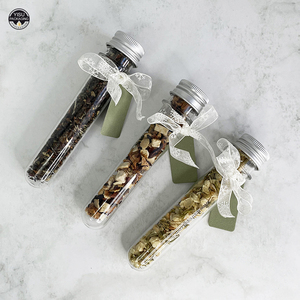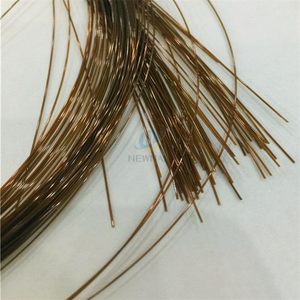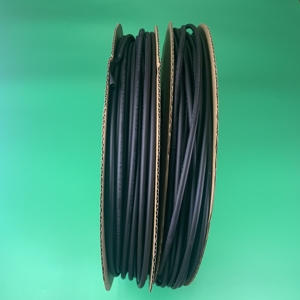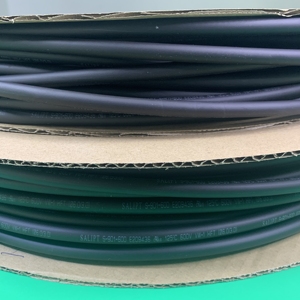
All categories
Featured selections
Trade Assurance
Buyer Central
Help Center
Get the app
Become a supplier

(2833 products available)













































A thin-wall plastic tube is a long, cylindrical piece of plastic with relatively thin walls. It is lightweight and has applications in various industries, including electrical, automotive, construction, and medical. These applications depend on the specific kinds of thin-walled plastic tubes. The following are the primary types:
According to the manufacturing process
Extrusion: The thin wall plastic tube is made by melting the plastic and forcing it through a die to create a tube. The process is simple and economical, producing consistent tubes used in various applications.
Injection molding: In this process, molten plastic is injected into a mold where it cools and hardens into a tube. This method is precise and waste-efficient, producing tubes with complex designs commonly used in medical devices and automotive parts.
Vacuum forming: A thin-walled plastic sheet is heated until it's pliable and then formed over a mold using suction. The sheet is then cut into tubes. This method is less expensive and suitable for low-volume production of containers.
According to the plastic type
Polyethylene (PE): It is the most widely used plastic for thin-walled tubes because it is economical and has good chemical resistance. It is commonly used in agriculture and construction applications.
Polypropylene (PP): This plastic is more rigid and has a higher melting point than PE. It is used to manufacture thin-walled tubes for packaging, automotive and medical applications.
Polyvinyl chloride (PVC): Thin wall plastic tubes made of PVC are strong, durable, and resistant to UV light. They are commonly used in electrical conduits and plumbing applications.
Polystyrene (PS): PS is a lightweight and economical plastic. It is used to make thin-walled tubes for consumer products and food packaging.
Polyethylene terephthalate (PET): These tubes are recyclable and have good barrier properties. They are commonly used for beverage and food packaging.
According to the usage
Medical: These include thin-walled tubes used in medical devices, packaging, and applications. They are made from specialized polymers like PET, PVC, and medical-grade polypropylene. These materials can be sterilized and are biocompatible.
Cosmetic: These are used to package and dispense creams, gels, and ointments. They are made from lightweight and squeezable materials like PP and LDPE. Usually, they have a smooth finish and are customizable.
Industrial: Thin-walled tubes are used in various industrial applications like packaging, insulation, and fluid transfer. They are made from durable and impact-resistant materials like HDPE and PVC. Generally, they are color-coded for easy identification.
Although thin wall plastic tubes come in different sizes, shapes, and materials, they offer similar features and functions. These are their key features:
Lightweight
Thin wall plastic tubes are lightweight. They are an ideal choice for applications where weight is an important consideration. These applications include: aerospace, automotive and portable devices.
Cost-effective
These tubes are manufactured using less material, which reduces the overall production costs. Additionally, the use of plastic allows for lower raw material costs compared to alternatives such as metal or glass. The cost-effectiveness of thin wall plastic tubes makes them a popular choice in applications where budget constraints are a primary consideration.
High strength-to-weight ratio
Despite their thin walls, these plastic tubes offer remarkable strength. This is due to their design which reduces weight while maximizing material efficiency. Additionally, the tubes are made of strong polymers such as ABS and nylon that provide structural integrity and durability to the tubes. The strength-to-weight ratio allows for better performance and reduced material usage.
Versatility
Thin walled plastic tubes are used in multiple applications across various industries. For instance, in the construction industry, they are used for structural support, electrical conduits and plumbing. In the medical field, they are used for packaging drugs, and medical devices. In the cosmetics industry, they are used for packaging lip gloss, ointments and lotions.
Enhanced aesthetics
Thin wall cosmetic containers come with enhanced aesthetics, which makes them ideal for the cosmetic and personal care industry. They come in different colors, finishes, and printing options. Their simple and sleek design improves the product's visual appeal, making it more attractive to potential customers.
Recyclability
Thin wall tubes are made from recyclable materials, which helps reduce environmental impact. Some manufacturers offer post-consumer recycled content in their products, which further reduces the need for virgin material and energy consumption during the manufacturing process. This makes the production process more sustainable.
There are many thin wall plastic tube application scenarios, including:
Cosmetics and Beauty Products
Thin wall plastic tubes are used for packaging lip balms, lip gloss, sunscreen, and facial creams. The cosmetic brands choose the tubes due to their lightweight, and the flexibility allows for easy squeezing and controlled dispensing of the products.
Pharmaceuticals
These tubes are used to package topical ointments, gels, and creams. The medical industry prefers the tubes because they are hygienic and allow for precise dosages, reducing wastage and contamination.
Food Industry
These thin-walled plastic tubes are used in the packaging of food products such as condiments (ketchup, mayonnaise, and mustard), nut butters, and cheese spreads. The flexible allows for complete evacuation of the contents, ensuring minimal wastage. Additionally, the tube packaging is lightweight and easy to carry, making it more convenient than glass jars or rigid containers.
Adhesives and Sealants
They are commonly used in the packaging of super glue, epoxy resins, silicone sealants, and other adhesives. The flexible design allows for easy application and precise dispensing of the adhesive. Additionally, the tubes are durable and protect the contents from air and moisture.
Art and Stationery
Plastic squeeze tubes are used in the packaging of watercolors, acrylic paints, glues, and other art materials. The flexible design allows for controlled dispensing, reducing waste and mess during application. Further, the lightweight nature makes it easy to carry during art projects.
Industrial Lubricants and Greases
These tubes are used for packaging of lubricants and greases. The thin wall tubes allow for precise application and controlled dispensing of the lubricant, which reduces waste and improves lubrication.
Personal Care Products
Thin wall tubes are used in the packaging of toothpaste, hand creams, and ointments. The cosmetic industry prefer these tubes because they allow for hygienic and convenient dispensing of the product.
Consider the Application
The first step is to consider the application requirements. For fluid delivery, a thin-walled tube with good chemical resistance and hydraulic properties is needed. Examples are PVC and polyethylene tubes. If the application is electrical wiring, then an insulated plastic electrical conduit is ideal. These tubes are made from materials like PVC or HDPE, which are good for wire protection.
Check the Material
Once the application is determined, the next step is to check the material of the tube. Different applications require different tube materials. Consider the tube's durability, flexibility, temperature resistance, and pressure rating. Choose a material that meets the operational requirements. For applications requiring frequent bending, select a flexible material like LDPE. For high-temperature applications, choose a material with high-temperature resistance, like nylon.
Evaluate the Wall Thickness
Another important factor to consider is the wall thickness of the tube. The thin-wall plastic tubes are designed to be lightweight and provide structural integrity. Ensure the wall thickness is suitable for the application's pressure requirements. Most manufacturers provide a data sheet with detailed information on wall thickness and pressure rating. Check the compatibility of wall thickness with the application.
Assess the Diameter and Length
The diameter and length of the tube are important factors to consider. Ensure the diameter is compatible with the fittings and other components in the system. Also, consider the length of the tube required for the application. Most manufacturers offer tubes in standard lengths. If the required length is not available, it can be achieved through welding or coupling.
Evaluate the Cost and Supplier Reliability
The last factor to consider is the cost of the tube and the reliability of the supplier. Choose a supplier with competitive prices and high-quality products. Request a quote and compare it with other suppliers. Check the certifications and reviews of the supplier and choose one that meets the expectation.
Q1: What is the minimum order quantity for thin-wall plastic tubes?
A1: The minimum order quantity varies among suppliers. Some may have a MOQ of several hundred pieces, while others may accept orders of thousands of units or more. It's best to check the specific requirements of each supplier.
Q2: What are the commonly used plastics for thin-wall tubes?
A2: The most commonly used plastics are PVC, polyethylene, and polypropylene. These materials are preferred because they are lightweight and have a good strength-to-weight ratio.
Q3: What is the delivery time for thin-wall plastic tubes?
A3: The delivery time depends on the production lead time and the shipping method. For example, plastic tube production takes about 7 to 15 working days. If a customer opts for air freight, the shipment will take 3 to 7 days. On the other hand, sea freight will take 15 to 30 days. As such, the total delivery time can range from a few weeks to several weeks.
Q4: Are the thin-wall plastic tubes customizable?
A4: Yes, most suppliers offer customizable plastic tubes. Customers can order different diameters, lengths, colors, and printing options. They can also send their design specifications for the tubes.
Q5: How can buyers find reputable wholesalers of thin-wall plastic tubes?
A5: Buyers can find reputable wholesalers by searching on online platforms like Alibaba.com. They should read reviews, compare quotes, and communicate with different suppliers to find the best fit. Also, they can request samples to assess the quality.